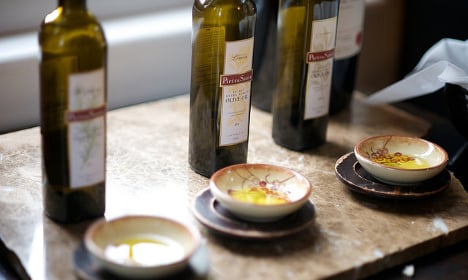The study was presented in Florence on Thursday, Italy's National Day of Italian Extra-virgin Olive Oil, which also saw 10,000 farmers protest against unfair competition and lack of transparency on oil labels.
Fraud in the oils and fats industry quadrupled in 2015, the organization said, with a record 278 percent increase in the number of products seized.
The most common type of fraud was passing off foreign oil as Italian. Foreign olive oils are often mixed with those from Italy before being packaged in bottles replete with Italian flags and imagery, potentially deceiving consumers.
Coldiretti's report revealed that there's more Spanish olive oil than Italian on supermarket shelves.
READ ALSO: Like a virgin – How to spot fake Italian extra virgin olive oil
Two thirds of bottles contained foreign oil, with Spain (60 percent) and Greece (25 percent) the most common culprits. Almost ten percent came from countries outside the EU such as Tunisia.
But this wasn't always clear from the packaging, which often carried Italian flags and symbols – leaving Italian farmers struggling with competition from lower-priced, lower quality foreign oils. The standard of extra-virgin olive oil in Italy is strictly regulated.
This is despite recent toughening of laws over packaging, which came into force in July this year and saw fines for fraudulent oil increased significantly.
While the laws made it compulsory to state on packaging when non-Italian olives had been used, the report argues that in many cases these labels are almost impossible to read, due to very small writing or awkward placement.
But it wasn't just shops and manufacturers who were guilty of neglecting laws over labelling and packaging on the oils. Restaurants also came under fire, with roughly three quarters failing to comply with regulations.
Italy is very protective of its olive oil. Numerous laws have been introduced in Italy to protect Italian farmers from unfair competition from lower quality brands passing themselves off as the real deal, and to protect consumers from sub-standard condiments.
Seven major Italian producers were investigated in 2015 after allegations they failed to abide by the rules on how olive oil should be produced and labelled.
The farmers' problems were compounded by a year of bad weather leading to a 38 percent drop in production in Italy, which Coldiretti called “a historic low, with inevitable effects on prices”.




 Please whitelist us to continue reading.
Please whitelist us to continue reading.
Member comments